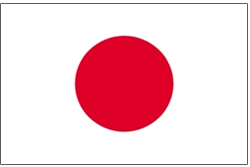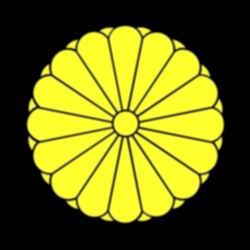
|
Japanese viewpoint |
| Ryukyu viewpoint |
| Ch'ing viewpoint |
| Aboriginal viewpoint |
Main article: History of Japan
The first signs of occupation on the Japanese Archipelago appeared with a
Paleolithic culture around 30,000 BC, followed from around 14,000 BC by the
Jomon period, a Mesolithic to Neolithic semi-sedentary hunter-gatherer
culture of pit dwelling and a rudimentary form of agriculture. Decorated
clay vessels from this period, often with plaited patterns, are some of the
oldest surviving examples of pottery in the world.
The Yayoi period, starting around the third century BC, introduced new
practices, such as wet-rice farming, iron and bronze-making and a new style
of pottery, brought by migrants from China or Korea. With the development of
Yayoi culture, a predominantly agricultural society emerged in Japan
The Japanese first appear in written history in China’s Book of Han.
According to the Chinese Records of Three Kingdoms, the most powerful
kingdom on the archipelago during the third century was called Yamataikoku.
A middle Jomon period vessel (3000 to 2000 BC).
The Great Buddha in Kamakura (1252).Buddhism was first introduced to Japan
from Baekje of the Korean Peninsula, but the subsequent development of
Japanese Buddhism and Buddhist sculptures were primarily influenced by
China. Despite early resistance, Buddhism was promoted by the ruling class
and eventually gained growing acceptance since the Asuka period.
The Nara period of the eighth century marked the first emergence of a strong
central Japanese state, centered around an imperial court in the city of
Heijo-kyo, or modern day Nara. In addition to the continuing adoption of
Chinese administrative practices, the Nara period is characterized by the
appearance of a nascent written literature with the completion of the
massive chronicles Kojiki (712) and Nihon Shoki (720). (Nara was not the
first capital city in Japan, though. Before Nara, Fujiwara-kyo and Asuka
served as capitals of the Yamato state.)
In 784, Emperor Kammu moved the capital from Nara to Nagaoka-kyo for a brief
ten-year period, before relocating it to Heian-kyo (modern day Kyoto) in
794, where it remained for more than a millennium. This marked the beginning
of the Heian period, during which time a distinctly indigenous Japanese
culture emerged, noted for its art, poetry and literature. Lady Murasaki's
The Tale of Genji and the lyrics of modern Japan's national anthem, Kimi ga
Yo were written during this time.
Japan's feudal era was characterized by the emergence of a ruling class of
warriors, the samurai. In 1185, following the defeat of the rival Taira
clan, Minamoto no Yoritomo was appointed Shogun and established a base of
power in Kamakura. After Yoritomo's death, the Hojo clan came to rule as
regents for the shoguns. Zen Buddhism was introduced from China in the
Kamakura period (1185–1333) and became popular among the samurai class. The
Kamakura shogunate managed to repel Mongol invasions in 1274 and 1281, aided
by a storm that the Japanese interpreted as a kamikaze, or Divine Wind. The
Kamakura shogunate was eventually overthrown by Emperor Go-Daigo, who was
soon himself defeated by Ashikaga Takauji in 1336. The succeeding Ashikaga
shogunate failed to control the feudal warlords (daimyo), and a civil war
erupted (the Onin War) in 1467 which opened a century-long Sengoku period.
During the sixteenth century, traders and Jesuit missionaries from Portugal
reached Japan for the first time, initiating active commercial and cultural
exchange between Japan and the West (Nanban trade).
Oda Nobunaga conquered numerous other daimyo by using European technology
and firearms and had almost unified the nation when he was assassinated in
1582. Toyotomi Hideyoshi succeeded Nobunaga and united the nation in 1590.
Hideyoshi invaded Korea twice, but following several defeats by Korean and
Ming China forces and Hideyoshi's death, Japanese troops were withdrawn in
1598.
One of Japan's Red seal ships (1634), which were used for trade throughout
Asia.
Samurai of the Satsuma clan during the Boshin War, circa 1867.
The 1945 atomic bombing of Nagasaki.After Hideyoshi's death, Tokugawa Ieyasu
utilized his position as regent for Hideyoshi's son Toyotomi Hideyori to
gain political and military support. When open war broke out, he defeated
rival clans in the Battle of Sekigahara in 1600. Ieyasu was appointed shogun
in 1603 and established the Tokugawa shogunate at Edo (modern Tokyo). The
Tokugawa shogunate enacted a variety of measures such as Buke shohatto to
control the autonomous daimyo. In 1639, the shogunate began the isolationist
sakoku ("closed country") policy that spanned the two and a half centuries
of tenuous political unity known as the Edo period. The study of Western
sciences, known as rangaku, continued during this period through contacts
with the Dutch enclave at Dejima in Nagasaki. The Edo period also gave rise
to kokugaku, or literally "national studies", the study of Japan by the
Japanese themselves.
On March 31, 1854, Commodore Matthew Perry and the "Black Ships" of the
United States Navy forced the opening of Japan to the outside world with the
Convention of Kanagawa. Subsequent similar treaties with the Western
countries in the Bakumatsu period brought Japan into economic and political
crises. The abundance of the prerogative and the resignation of the
shogunate led to the Boshin War and the establishment of a centralized state
unified under the name of the Emperor (Meiji Restoration). Adopting Western
political, judicial and military institutions, the Cabinet organized the
Privy Council, introduced the Meiji Constitution, and assembled the Imperial
Diet. The Meiji Restoration transformed the Empire of Japan into an
industrialized world power that embarked on a number of military conflicts
to expand the nation's sphere of influence. After victories in the First
Sino-Japanese War (1894–1895) and the Russo-Japanese War (1904–1905), Japan
gained control of Taiwan, Korea, and the southern half of Sakhalin.
The early twentieth century saw a brief period of "Taisho democracy"
overshadowed by the rise of expansionism and militarization. World War I
enabled Japan, which joined the side of the victorious Allies, to expand its
influence and territorial holdings. Japan continued its expansionist policy
by occupying Manchuria in 1931. As a result of international condemnation
for this occupation, Japan resigned from the League of Nations two years
later. In 1936, Japan signed the Anti-Comintern Pact with Nazi Germany,
joining the Axis powers in 1941.
In 1937, Japan invaded other parts of China, precipitating the Second
Sino-Japanese War (1937–1945), after which the United States placed an oil
embargo on Japan. On December 7, 1941, Japan attacked the United States
naval base in Pearl Harbor and declared war on the United States, the United
Kingdom and the Netherlands. This act brought the United States into World
War II. After the atomic bombings of Hiroshima and Nagasaki in 1945, along
with the Soviet Union joining the war against it, Japan agreed to an
unconditional surrender on August 15 (Victory over Japan Day). The war cost
Japan millions of lives and left much of the country's industry and
infrastructure destroyed. The International Military Tribunal for the Far
East, was convened by the Allies (on May 3, 1946) to prosecute Japanese
leaders for war crimes such as the Nanking Massacre.
In 1947, Japan adopted a new pacifist constitution emphasizing liberal
democratic practices. The Allied occupation ended by the Treaty of San
Francisco in 1952 and Japan was granted membership in the United Nations in
1956. Japan later achieved spectacular growth to become the second largest
economy in the world, with an annual growth rate averaging 10% for four
decades. This ended in the mid-1990s when Japan suffered a major recession.
Positive growth in the early twenty-first century has signaled a gradual
recovery.
 |
 |
| Japan's national flag | Japan's national emblem |
Reference
http://en.wikipedia.org/wiki/History_of_Japan